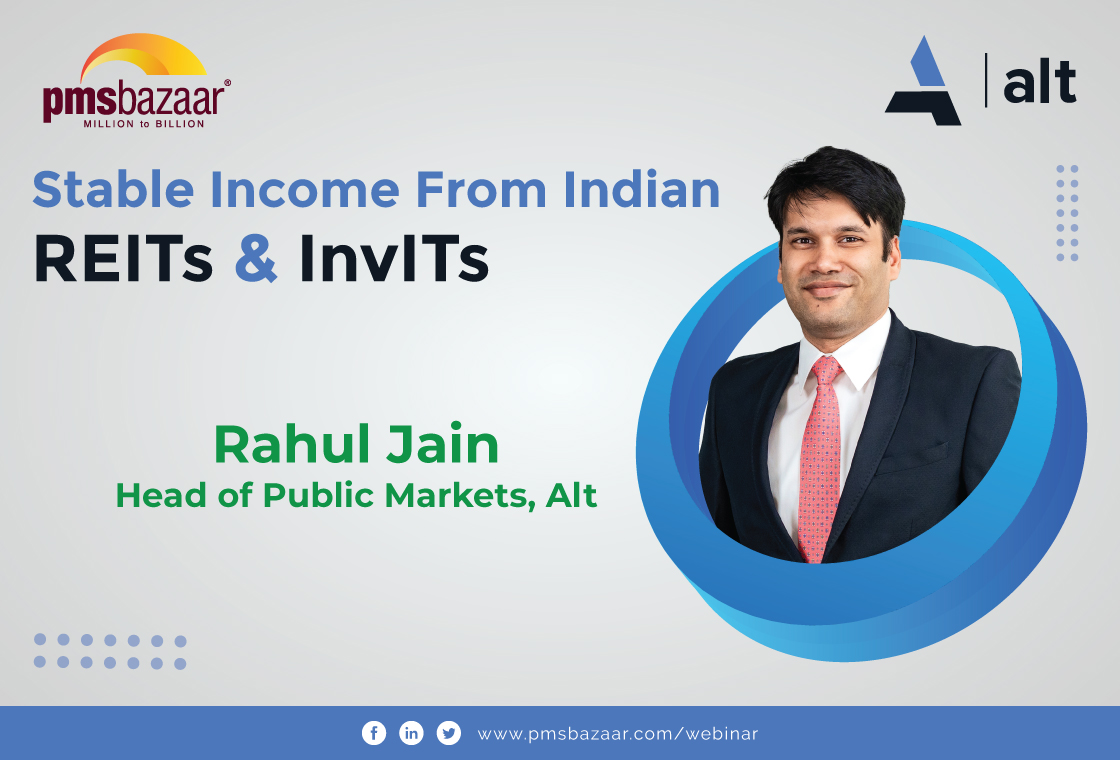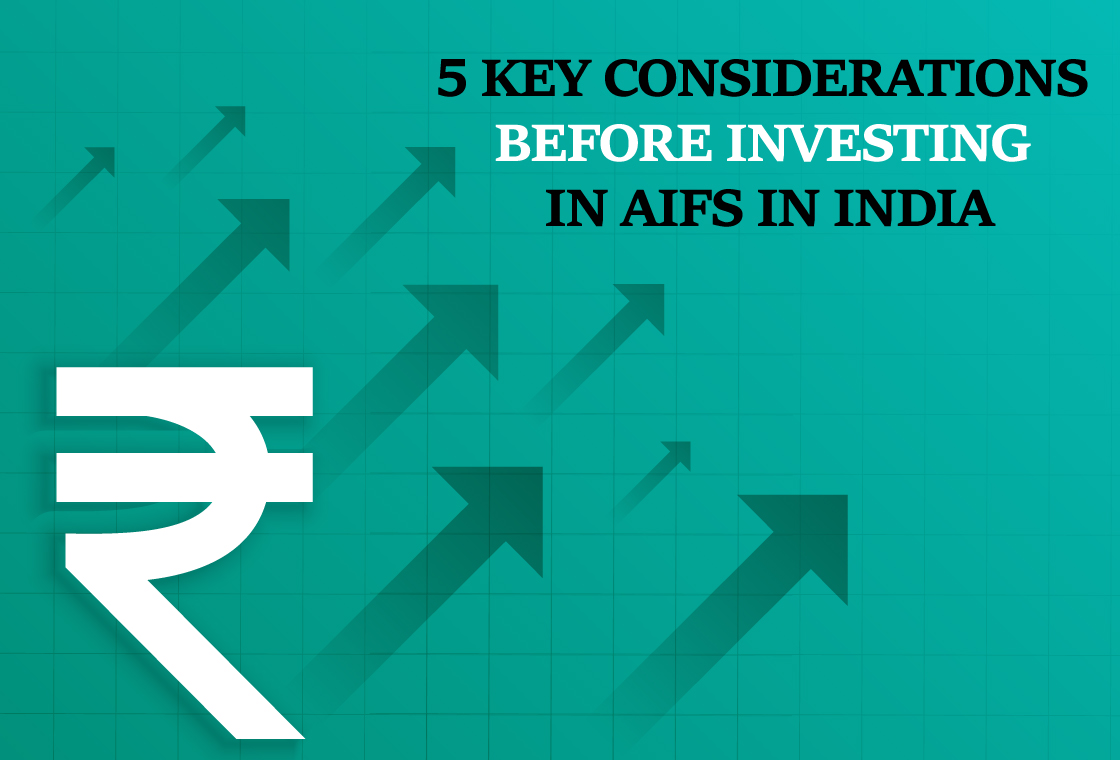Market fluctuations are inevitable, even if they might be upsetting, and no one can foresee when they will occur. Understanding how market cycles function will assist you in maintaining perspective in unpredictable times so that you can concentrate on your investment strategy tailored to your individual goals. This webinar blog will cover what market cycles mean, and how based on these cycles it is important for fund managers to devise an investment strategy customized to meet investors’ goals and objectives.

Market cycles and phases exist. Even if there are ups and downs in the market cycle or volatility in the market having a thorough understanding of these phases helps investors and fund managers behave more predictably and navigate the market volatility more efficiently. Considering this perspective, we conducted a webinar on the topic –Market Cycles - How to Navigate?
Mr. Viraj Mehta, Managing Director - PMS of Equirus Wealth Pvt Ltd, presented the webinar with in-depth analysis to understand market cycles and how to navigate during market cycles. In addition, recognizing and trusting that the best protection against inevitable market downturns is devising investment portfolios. Some of the key insights that were covered in the webinar have been discussed below.
The Key Insights of this Webinar are:
- Understanding what exactly a market cycle is.
- The Divergence between Small-Cap and Mid Cap
- Sector-Wise Market Cycle and Growth
Understanding What Market Cycle Is
According to Mr. Viraj Mehta, “The market cycle is not only about anticipating macro-environmental changes, where the reverse or the repo would be or how often the Fed would increase the rates or where oil would be in three or two years, or where steel or aluminum would be in three years from now, but it is much more crucial to comprehend and have a thorough awareness of the industry's fundamentals, where essentially the business stands in today’s cycle and what price we are paying for it.”
If we look at India's listed space and actively traded space of close to 2000 shares, not more than 50 stocks of reasonable size have consistently compounded investors’ wealth over eight to ten years. There have been times when some of the industry stalwarts, have not created wealth for investors for about five to ten years. Therefore, owning a business for three to four years and understanding the business cycle becomes even more important.
Hence, it is crucial to understand the business cycle to invest in stocks at the right time and the right valuation and to exit those investments when the valuation and the business cycle are not in your favor. A significant portion of this understanding also comes from experience, as only 5% of stocks will continue to compound wealth over more than a decade. Additionally, keep in mind that markets and businesses don't always go in a straight line.
All firms experience troughs and peaks in their earnings while they continue to grow, with the possible exception of a quarter here and there. Some businesses have stronger cyclicity than others, such as steel companies with their high degree of cyclicity. There are periods of growth in earnings and periods of stagnation or decline in commodities cycles, P/BV shrinks in upcycle as investors prepare for a fall in the earnings. In other industries, it may not be obvious but people with experience in the market can judge these trends.
Understanding that cycle from commodities to production is crucial. Some of these parameters' effects can cause a company's size to decrease. Moreover, operational and valuation cycles are not necessarily synchronized. Maximum return is made when both are in sync and vice versa. The best strategy during volatile times is to maintain composure and stick to your investment plan. Experienced investors and fund managers can understand what causes the up-leg or down-leg of industry and position their portfolios accordingly, without the need for actual prediction of any raw material or output prices.
The Divergence between Small-Cap and Mid Cap
If you've been paying attention to the stock market for the past years or so, you might be aware that growth companies have been on a tear, outperforming their value counterparts throughout the prolonged bull market. But recently, there has been a substantial change in the dynamics of the growth versus value conflict. Growth equities have fared significantly better than value stocks year-to-date in the large-cap area, but the opposite has been true in small and mid-caps.
If you look at the divergence between small-cap and mid-cap up until this point this year, it is considerably greater. But if you look at the valuation gap today, the valuation gap is 31%, whereas the long-term average is close to 35%. There isn't a significant reduction for purchasing a small-cap roughly in the same area. At any point in the previous five years, there have been cases where the discounts have been bigger, such as in 2018 and 2019, when they reached as high as 40% and 45% and it's just a larger perspective at that time; had you invested in stocks then, you would have profited.
Let's understand specific examples of various indices and how to read those indices and at what point and when they outperform. There has been a period of market outperforming, from 2013 to 2015-19. It was during this period when earnings were growing at 4%, and we witnessed many companies and industries doing well and which was also reflected in valuation. At that point in time, the index was probably one of the best. However, this cycle reversed due to pressure on the margins in the Steel Industry, and post that, especially in the last 1.5 years, the volumes also significantly decreased. We did not witness such cycles in 2019 and the last 3 years; however, we may start seeing some of those numbers in 2023-2024. Therefore, these are the market cycles we need to understand and consider how best we must plan our investment strategies based on these cycles.
Sector-Wise Market Cycle and Growth
1. Cement Sector
If you consider what happened in the cement sector in the first decade of the century, we saw their bottom line grow at a rate of about 66% CAGR in the first ten years, but in the last ten years, it has not grown much. On top of that, the valuation has been reduced to pre-2002 time frames, so some of these companies are currently trading at their lowest valuations in the past five years. However, this is a promising area that investors and fund managers must look at.
2. EPC (Engineering, Procurement, and Construction)
In the EPC Engineering Company, the project company contracts with a single EPC Contractor (a business that completes an EPC project is known as an EPC Contractor), who will then be entirely in charge of the project's design, procurement, construction, commissioning, and handover to the project owner.
In this industry, where India's infrastructure CAPEX is at an all-time high, order books are at an all-time high, we hardly have any good players with decent balance sheets in this industry., There is a significant risk-reward in the next three to four years in investing in this industry.
3. Chemical Industry
According to Mr. Viraj Mehta, “The chemical sector is a different sector that has performed well in the first decade and is continuing to do so well in the second decade but the valuations here have gone sky-high. There is still some more correction to go in this sector before we start taking large active bets in the sector. However, this sector has a large upside to come. We do believe that this industry will have significant future growth, but as a business and as a stock, some of these have already outperformed their value, so we will be extremely cautious and conservative when it comes to this area.”
The theory of market cycles is well understood by investors, as is the need for asset allocation in reducing risk due to unavoidable ups and downs in market cycles. Success depends on an understanding of how to position a portfolio to minimize risk while maximizing rewards. The most important caveat about the transition between cycles is that unexpected events can definitely amplify not only the peaks and troughs of the individual cycles but also speed up the transition between them. The best portfolio managers keep market cycles in perspective and are aware that unusual events can throw everything into disarray and cause market volatility.
Mr. Viraj Mehta covered all the above-mentioned topics in-depth and also answered some questions from the audience towards the end of the session. For more such insights on market cycles & navigating through the market cycle, watch the recording of this insightful session through the appended link below:
Get access to rich data and analytics of PMS & AIF by subscribing to us: Subscribe NOW
Recent Blogs

Long-Only AIFs Rebound Sharply in October; Long-Short Strategies Lag Despite Lower Volatility
106 long-only AIFs averaged 3.68% vs 32 long-short AIFs at 2.7%; only 24–31% of funds beat key indices

Markets log strongest monthly gains in 7 months; PMS performance turns near-uniform in October
Nifty 50 TRI gained 4.62%, BSE 500 TRI rose 4.27%; 415 of 427 equity PMSes ended positive

How SMEs are Shaping India’s Investment Landscape?
PMS Bazaar recently organized a webinar titled “How SMEs are Shaping India’s Investment Landscape?” which featured Mr. Shrikant Goyal, Fund Manager, GetFive Opportunity Fund.

Stable Income from Indian REITs and InvITs
PMS Bazaar recently organized a webinar titled “Stable Income from Indian REITs and InvITs,” which featured Mr. Rahul Jain, Head of Public Markets, Alt.

5 Key Considerations Before Investing in AIFs in India
Alternative Investment Funds (AIFs) have emerged as a compelling option for sophisticated investors seeking diversification and potentially superior returns. But venturing into AIFs requires a clear understanding of their unique characteristics that go beyond simply knowing what they are and their categories.

How AIF can help in diversification?
Traditionally, Indian investors have relied on a mix of stocks and bonds to build their wealth. While this approach offers diversification, it can still leave your portfolio vulnerable to market fluctuations. Enter Alternative Investment Funds (AIFs), a dynamic asset class gaining traction for its ability to unlock diversification beyond the realm of conventional options.

Long-Short AIFs Outperform Again Even as Markets Rebound in September
104 long-only funds shows an average monthly gain of just 0.37 per cent, while long-short AIF category averaged 0.94 per cent

Resilience returns as markets rebound in September; Multi-asset PMSes lead pack
Over 63% of equity PMSes ended September in green; nearly two-thirds outperformed key benchmarks.

